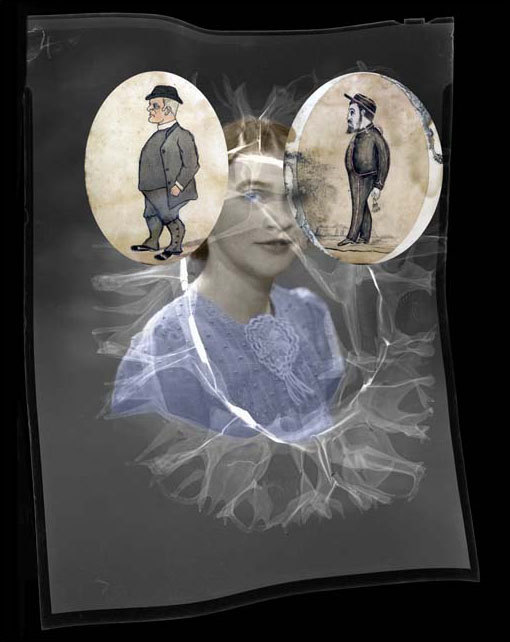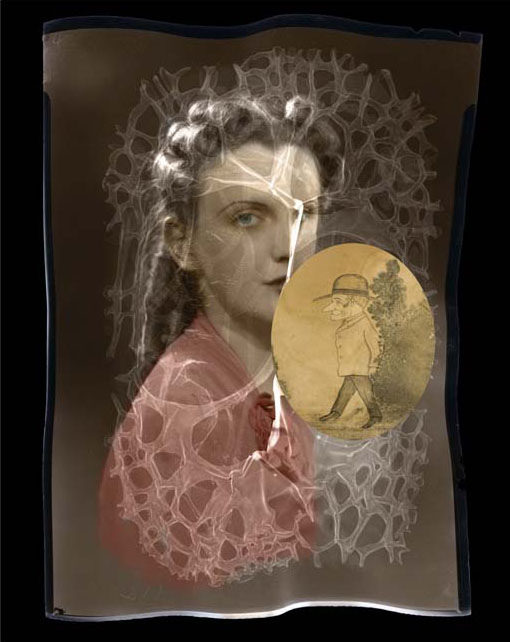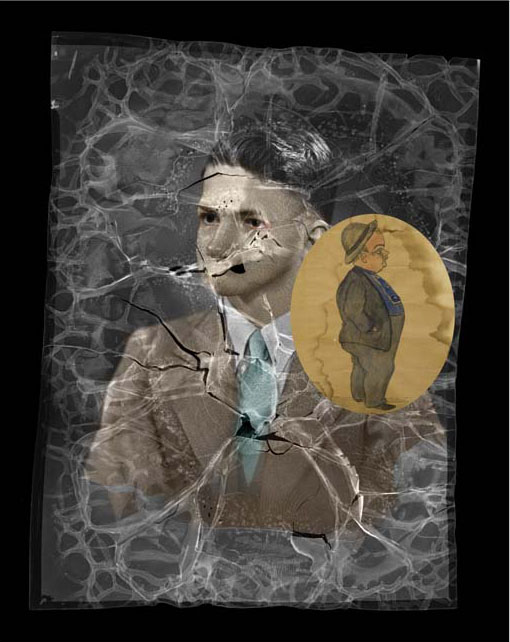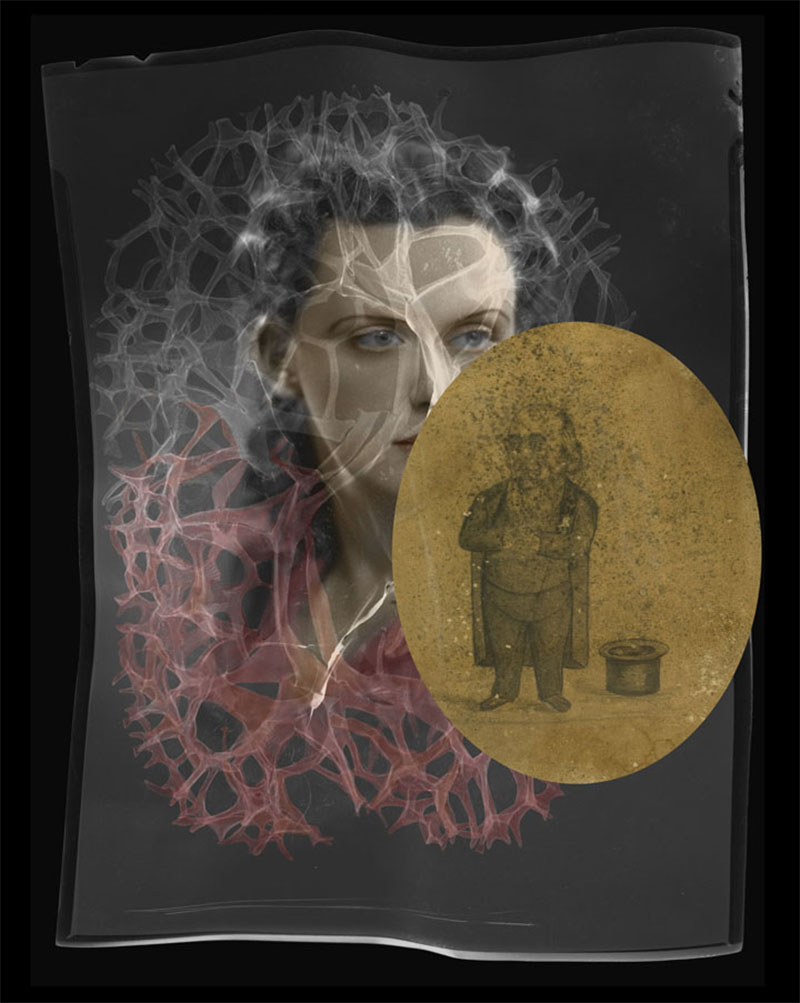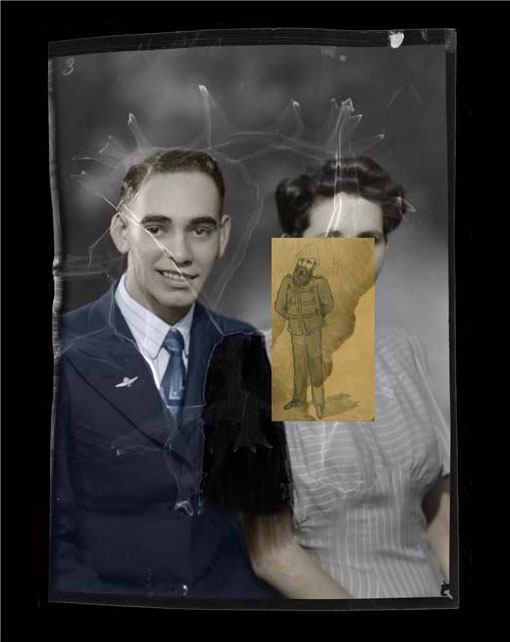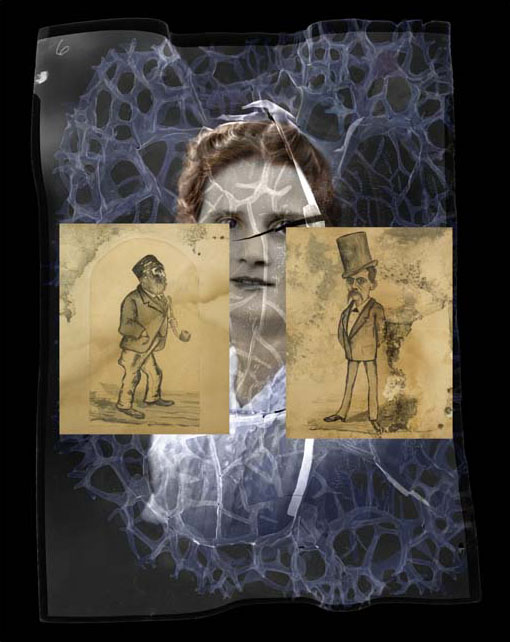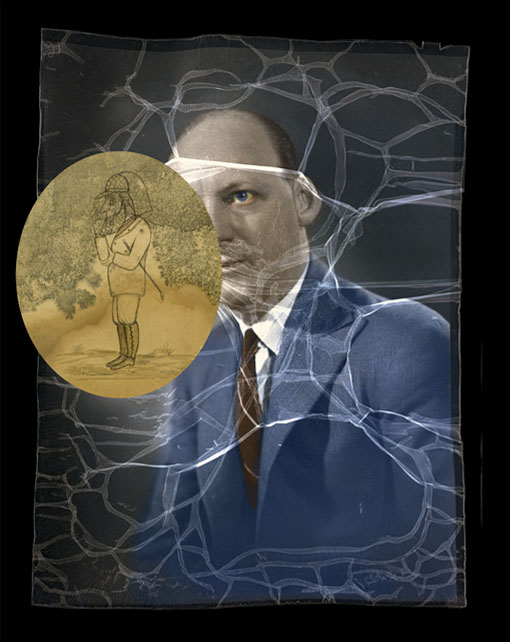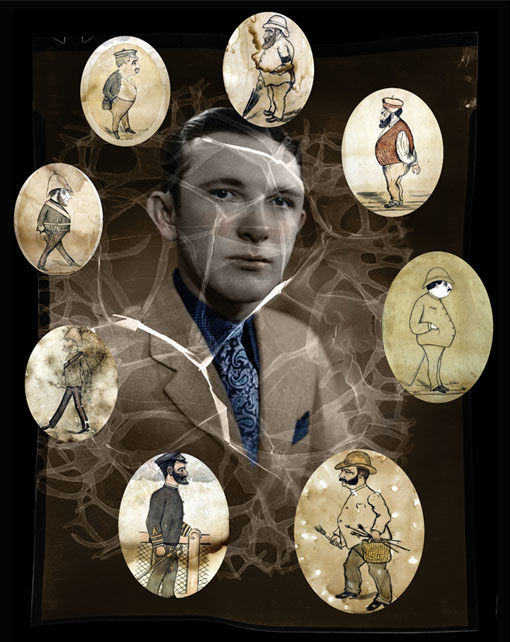Fiona MacDonald set out to research and create a ‘portrait of a people’ living in a mid-sized Australian town as time unfolds—using local photographic treasure troves and collections found in and around her hometown of Rockhampton. Eminent art historian Joan Kerr observed different locations—regional versus metropolitan—had wildly different meanings and resonances but “each place benefited by these creative combinations of the familiar and the alien”.1 Blessedly this first opportunity for a review takes place on native soil. Local Studies shares some common ground with social portraiture but such records, as evocative as they may be, deny or repress real and historically embedded differences, injustices and conflicts. The recent chapter of Local Studies – Mosquito Divan are manipulated works based on photographs taken by Central Queensland’s legendary Mercer Photographic Studios, a collection of around 60,000 photographic negatives.2 MacDonald’s collages set out the impact of the Second World War on the dream life of an isolated rural town: suddenly everyone presents as a Hollywood star, what writer William Burroughs called a ‘naked lunch’ of consumption in the making, grandparents of today’s Australian Idol hopefuls. The crazed images evoke the passing of time and a revelation. The mosquito in their dreaming, their puncturing or undoing, is the persistent Frog, Louis Martin, whose vignettes of folly return to buzz around the sitters in the spirit and variety of his caricatures. The closing words belong to another fellow Queenslander Joan Kerr: Along with other contemporary artists, MacDonald has successfully relocated herself. She may live in Sydney but she knows what the world looks like from Boulia.
Jo Holder catalogue essay Local Studies, Global Reach: a View from Central Queensland archives 2009
Notes
1 Joan Kerr, ‘Art Begins at Boulia’ (1995), Joan Kerr: A Singular Voice, Essays on Australian Art and Architecture, 2009.
2 Terrence Mercer and his wife Beatrice ran the studio from 1919 followed by their son (Terrence II) until the digital age closed the studio in 1995. Source: telephone interview with Terry Mercer.
Mosquito Divan No. 1, 2009. Source images: Mercer Studios portrait of Miss Tickner Stewart’s Cafe, Rockhampton 1942 and Louis Marcellin Martin sketch of Smith, Rockhampton 1870
Mosquito Divan No. 3, 2009. Source images: Mercer Studios portrait of Z Smythe, Rockhampton 1940 and Louis Marcellin Martin sketch of D Jones, Rockhampton 1870
Mosquito Divan No. 6, 2009. Inkjet print from digital image on Hahnemuhle Photo Rag 188gsm paper, 43 x 53.5cm (image size) 50 x 60.5cm (paper size) Source images: Mercer Studios portrait of M Knickle, Boongoondo Station, Jericho, 1942 and Louis Marcellin Martin sketch of Inspector Dillon, Rockhampton 1870
Mosquito Divan No. 8, 2009. Source images: Mercer Studios portrait of R Bower, Gladstone 1941 and Louis Marcellin Martin sketch of William Billy Rae, Rockhampton 1870
Edition of 5 with 3 artist proofs
Inkjet prints from digital image on Hahnemuhle Photo Rag 188 gsm paper, 43 x 53.5 cm (image size) 50 x 60.5 cm (paper size)
Art Work Source images courtesy: Mercer Studio portraits from the Central Queensland Collection Rockhampton Regional Council Libraries, Louis Marcellin Martin sketches from the Capricornia Collection University of Central Queensland


